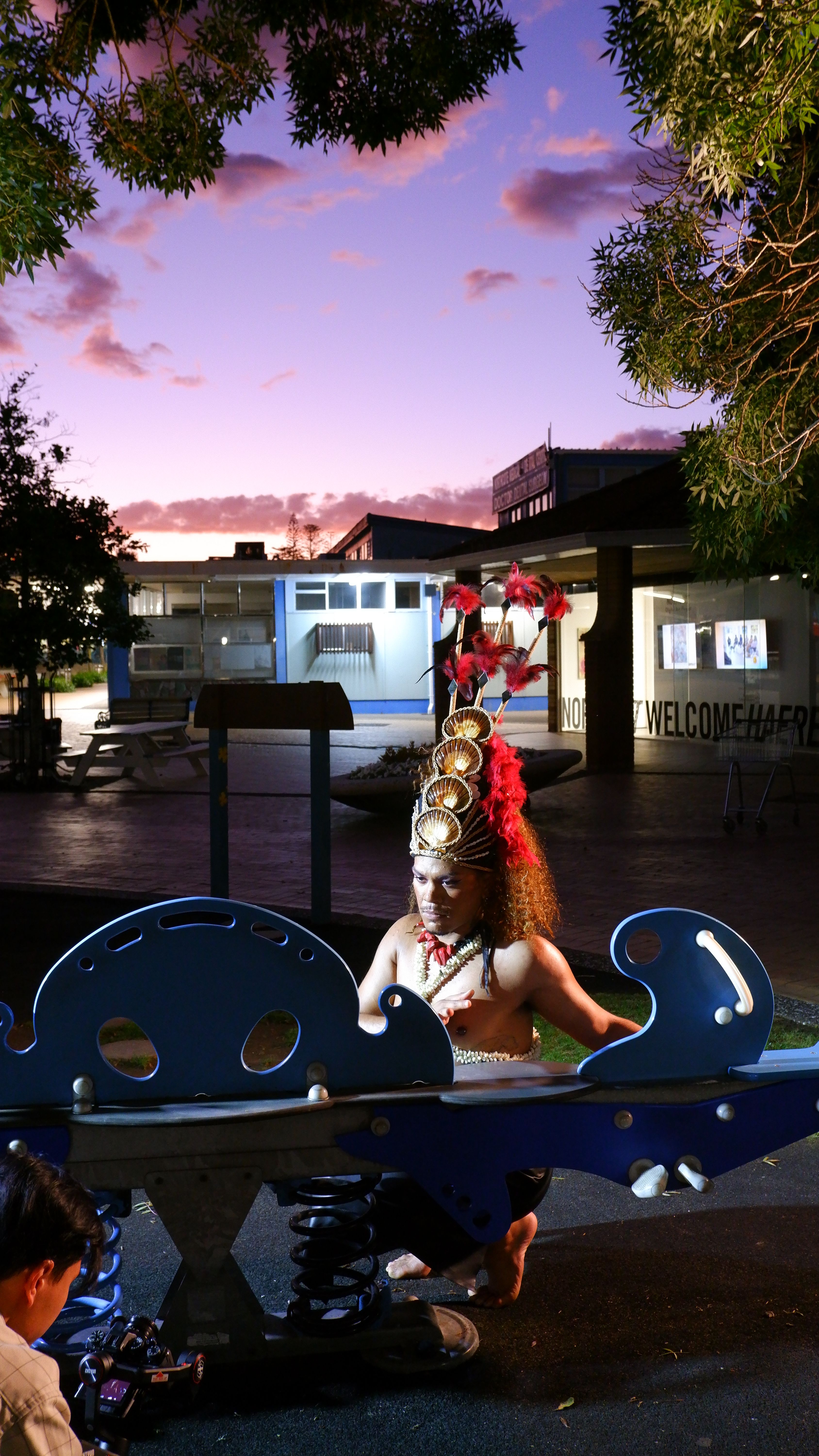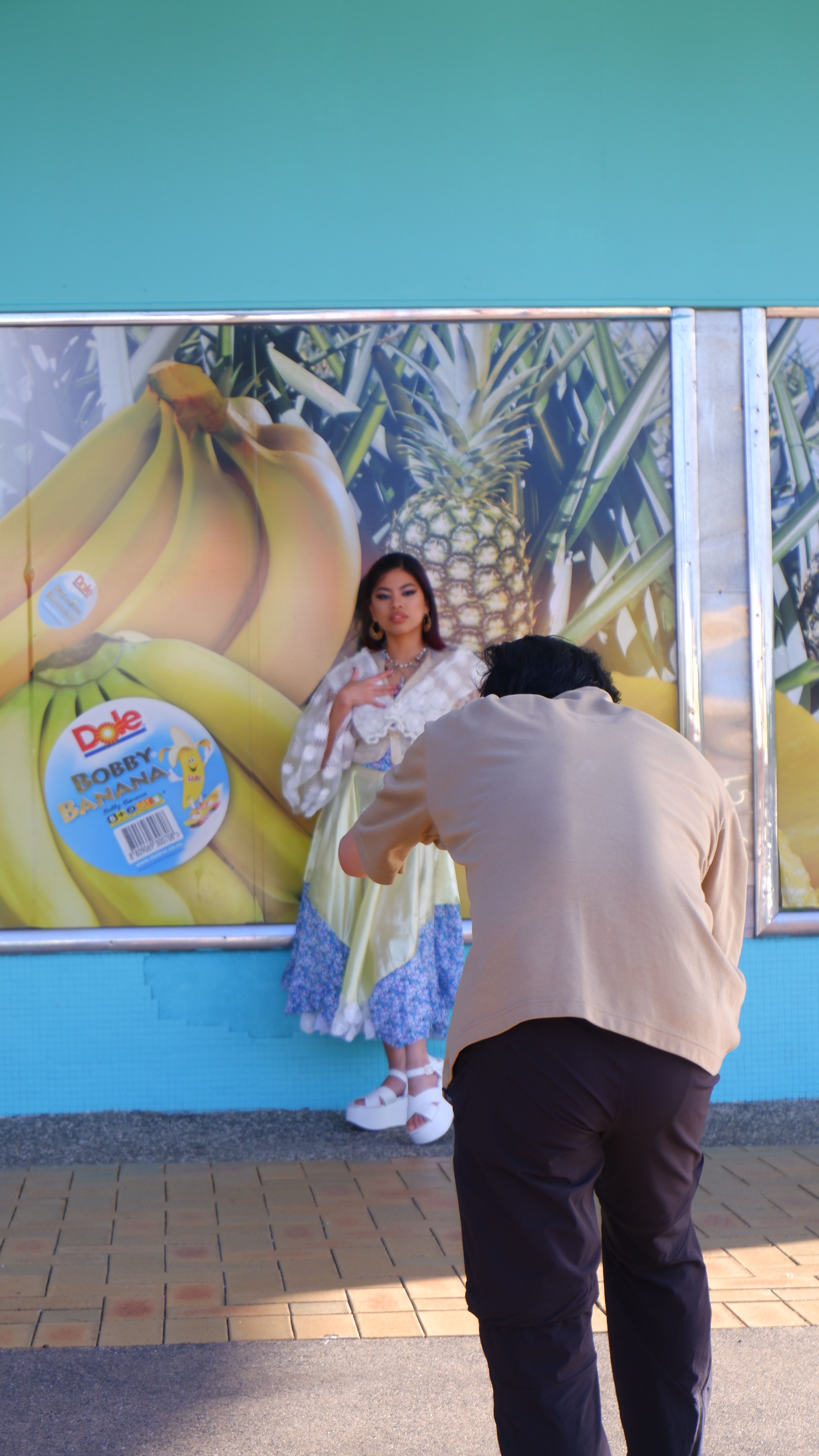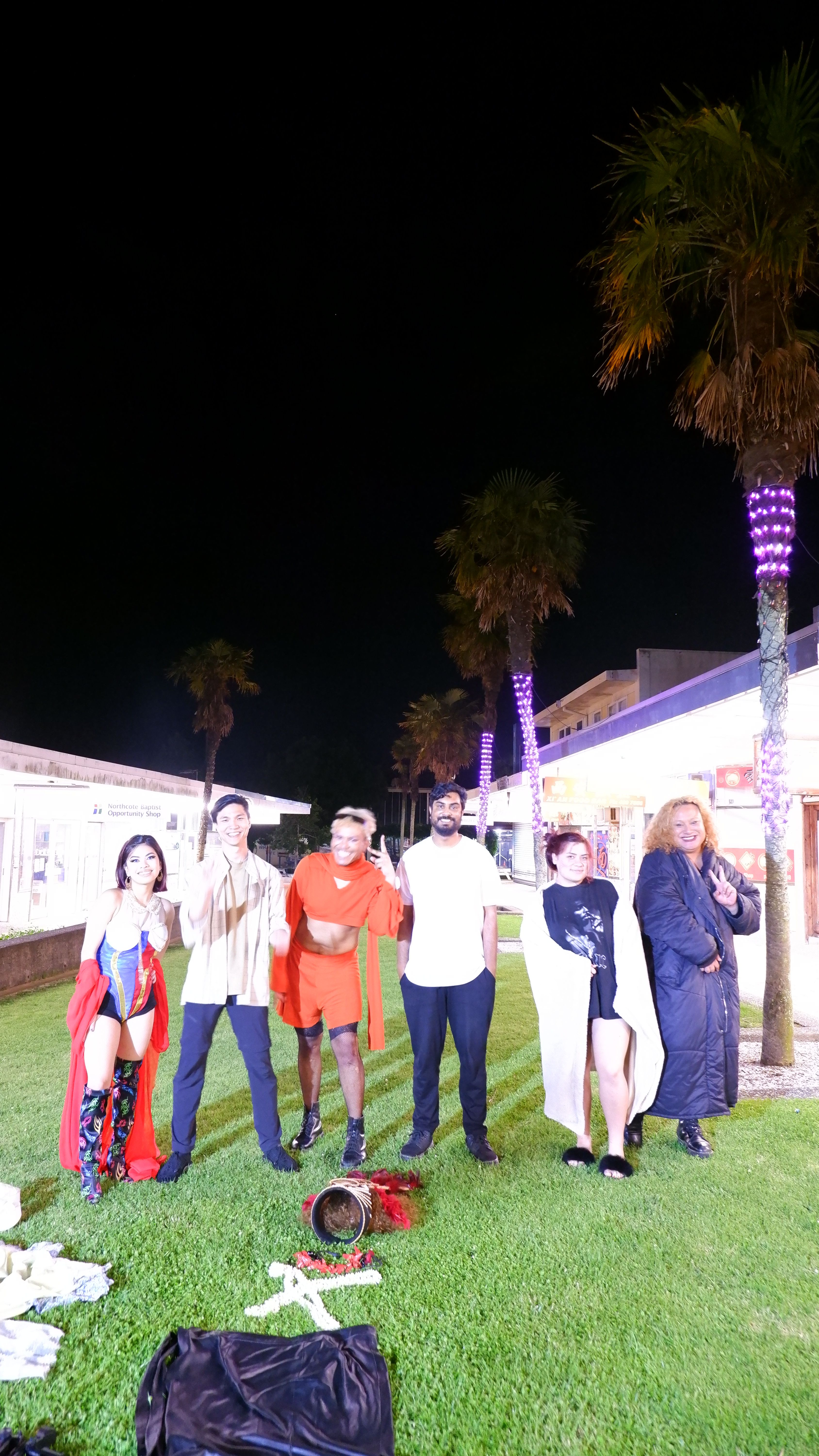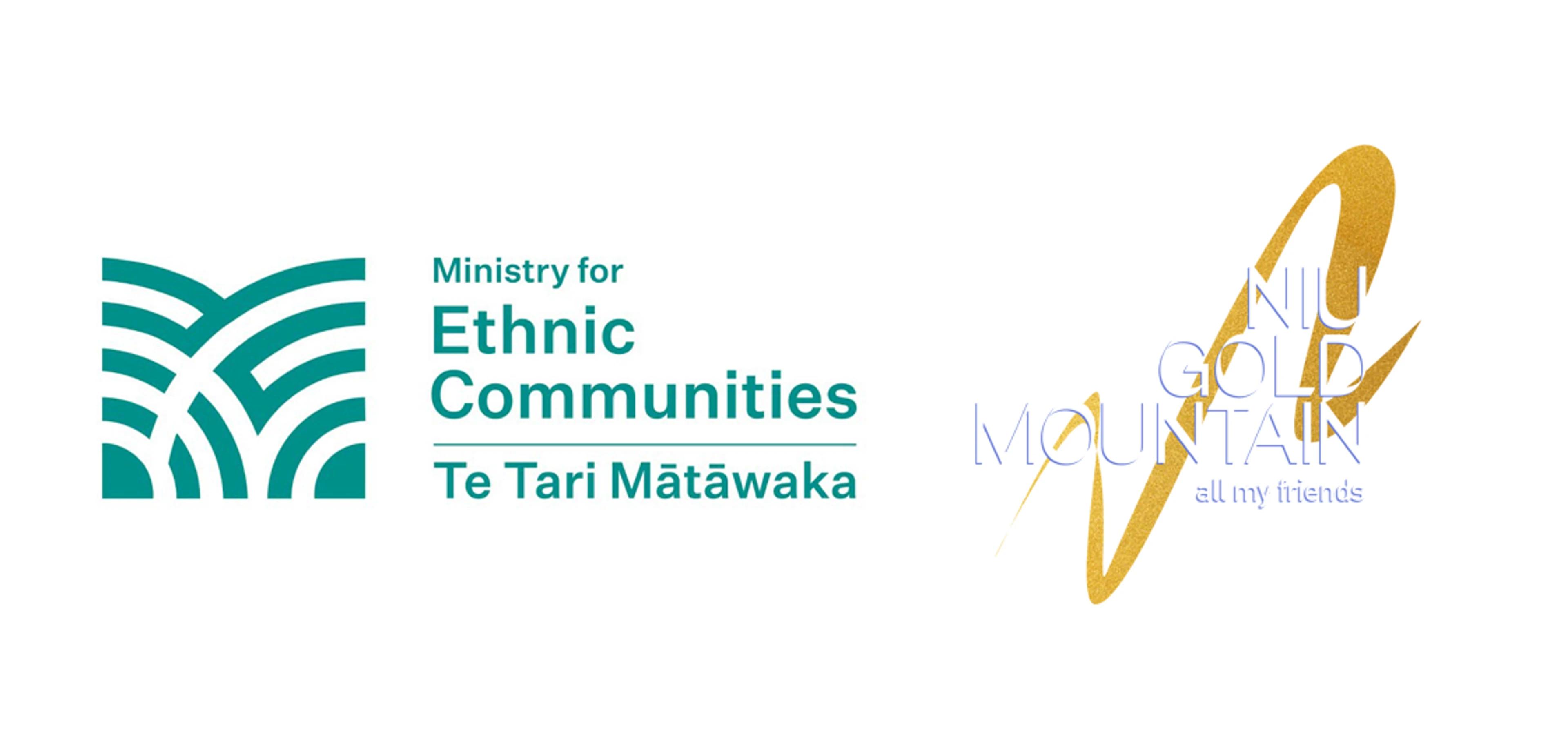The Mysterious Miracle of Migrants
Mahiwaga is a poetic, magical and mysterious dance video through Northcote Town Centre, as part of All My Friends’ Niu Gold Mountain project. Naomii Seah chats to the creatives and looks into the future of this local hub.
All My Friends are a creative collective from Tāmaki Makaurau who dream up and create events for our Queer and PoC whānau. Niu Gold Mountain is a four-part collaborative video project with 13 emerging Asian and Pasifika creatives, which asks “What is your New Gold Mountain?” What are your aspirations? The search for a better life is a story that defines the migrant diaspora.
In partnership with All My Friends, we have invited four writers to reflect on the themes, journeys and stories explored in the videos. In this essay, Naomii Seah responds to the music video Mahiwaga, by Darryl Chin, Lara Chuo and Cypris Afakasi
Read the whole series here, and find out more about All My Friends here.
When we migrate, how do our cultures, traditions and families themselves change? What do we lose in the process, and what do we gain? Are we, the children of so much sacrifice, a manifestation of our ancestors’ dreams? Or have we become something unrecognisable?
These are some of the questions posed by Mahiwaga, a collaboration by videographer and editor Darryl Chin, and dancers Lara Chuo and Cypris Afakasi. But pay close attention, and the film answers its own question. In Tagalog, ‘mahiwaga’ translates as both ‘miraculous’ and ‘mysterious’.
Behind the Scenes with Cypris Afakasi
As an only child born to migrants, who themselves were descended from migrants, the term ‘mahiwaga’ resonates with me as it applies to migration stories. The confluence of generations of ancestry, the global forces that shape migration, and the unique cultures and traditions that have developed all over the world – isn’t that miraculous? And hidden in every miracle is mystery: how and why are we affected by the past? What do we owe, and how do we move forward?
Shot in three distinct parts, the video presents itself as a journey from the past to the future. Beautifully lit by Suren Unka, the film moves from black and white to full colour, from daybreak to nightfall, and from melancholy, operatic music to a full-blown rhythmic ballroom track at the end credits.
In Tagalog, ‘mahiwaga’ translates as both ‘miraculous’ and ‘mysterious’.
Themes of ancestry and duty are evoked through supernatural imagery; Afakasi stands behind Chuo, lip-syncing to her spoken poem: It is good. At least, that’s what they said. With hands on Chuo’s shoulders, Afakasi appears to speak through her, manipulating her movements. Here the fourth-wall break again evokes the supernatural: Afakasi is appearing to speak directly to us, the audience, while Chuo looks into the distance, apparently unaware of both Afakasi and the audience.
To Chuo, this moment encompasses some of the central themes in Mahiwaga. Behind her, Afakasi, representative of ancestry and family, is “not controlling”, but guiding, informing Chuo’s identity, she adds in our interview. “I have to accept that it’s a part of me.”
For Chuo, Mahiwaga represents a journey toward self-acceptance, which begins with self-reflection. The prominence of mirrors and mirrored images in the beginning of the film ties the themes of the past and self-reflection together: Who was I? Where did I come from? The past shapes the present just as heritage shapes identity.
The mirror was her god… in the midst of materialistic ideologies, fantasy, creation, magic manifested, or dreams wasted?
A reflective surface ripples like water; it is like the push and pull of the oceans that carry us from one home to another. As Chuo looks into the mirror, her reflection distorts, pulling her features into super-human proportions.
Although heritage and the past can shape the present and the future, it doesn’t predetermine either. As the music crescendos, Chuo wonders: Who was she really, deep down inside? Afakasi, looking into the camera, embodies Chuo’s words in the voiceover: It was a curse. The mirror was the curse.
Dwelling on the past can prevent one from being present, from moving forward, from truly living.
In the next shot, our gaze is frustrated by the mirror: Chuo, standing over it, can no longer be seen. Only the train of her dress is reflected in the mirror’s image. The mirror reflects the past, and the past is only a part of the picture – to move forward, we must go beyond the mirror.
Here, Chuo breaks the spell. Unlike Narcissus, who was so enamoured with his own reflection that he eventually died, Chuo recognises that continual self-reflection can obscure the goal of self-acceptance. Dwelling on the past can prevent one from being present, from moving forward, from truly living.
Behind the scenes with Lara Chuo
As the scene transitions into colour, and the backing track transitions from melancholy opera to a stirring ballroom beat, the camera pans out. Chuo and Afakasi are framed against Northcote Town Centre. Wearing their costumes from the previous sequence, the supernatural is contrasted against the mundane, suggesting that perhaps they are one and the same. Chuo’s makeup, by Hailee Tamore, sparkles in the full light of day. Magic and mystery surround us, and are imbued in the realities of lived experience.
Finally, as night falls, Chuo and Afakasi are transformed – according to the video’s blurb – “to their everyday selves”. Against a backdrop of fairy lights strung across the elm in Northcote Town Centre, Chuo and Afakasi vogue. The dance is not just a reference to the Queer ballroom scene that both are part of, pioneered by Black and Latinx communities in Harlem, but an ode to the wider history of Queer culture.
Mahiwaga ends in a celebration of Queerness, of the freedom and evolution of self that Chuo associates with her migration story. From a Catholic context back in the Philippines, Chuo notes: “If I hadn’t come to New Zealand, I probably wouldn’t be studying dance, and I probably wouldn’t have come out.” Her identity as a Queer Filipino woman in the creative arts is the culmination of all that came before: a miracle in itself.
“Our new gold mountain is being allowed to be queer, fabulous and weird,” says Chuo.
Screenshot from Mahiwaga
“New gold mountain” – the phrase that lends its name to AMF’s overarching project – was a phrase used by Chinese migrants who travelled west during the various gold-rushes of the 19th century. The moniker is evocative of both a pioneering spirit and the promise of wealth and riches. Ultimately, it encompasses the promise of migration itself: a new beginning, the mystery and promise of a new land.
Although it might not look like it, Northcote Town Centre, the setting of Mahiwaga, embodies this mythical new gold mountain. Prior to being renamed 'Northcote' in the 1880's, this whenua has been home to various iwi, and called by many names. The oldest inhabitants of the whenua (according to online sources) are Ngāti Tai, alongside Ngāti Paoa and Ngāti Whātua who have at various stages presided over Onewa Pā. This was a village of strategic importance located on the Point where local iwi would fish and gather resource from the nearby ngahere. Following the founding of Auckland in 1840, Onewa Pā was part of the vast amounts of land sold to the Crown through colonial efforts, and removed from Māori custodianship.
In the 1920's, Northcote Town Centre, now a hub for Pākehā, saw the construction of cinemas, shops and post offices to serve its primarily European middle-class population. But with the rise of shopping malls, businesses began to leave the area. As they did, Asian enterprises moved in, revitalising the area and creating a “haven” for Chinese migrants. Here, the setting parallels the themes of migration and cultural amalgamation that Mahiwaga speaks to.
Currently, Northcote is undergoing a redevelopment. In council documents, the proposal promises to “retain” Northcote’s unique heritage, but many aren’t convinced. Rachel,* who has requested to remain anonymous, has worked around the area for years and says she’s worried the redevelopment will “completely kill what makes Northcote special… it’s pure gentrification.”
The promise of migration itself: a new beginning, the mystery and promise of a new land.
For the Mahiwaga team, using Northcote Town Centre as a backdrop is not just a way to evoke the themes of the film, but a way to document and preserve its Asian heritage while long-standing businesses are forced out by the redevelopment.
In an email response to some of these concerns, a spokesperson for Eke Panuku, the council-run development board, says that one of their “essential outcomes” for the redevelopment is for the retention of “the town centre as a destination for Asian cuisine and using placemaking, public art and sculpture as components to reflect the community”.
They state that extensive consultation has been conducted with relevant stakeholders, including not only mana whenua, local schools and environmental groups, but organisations like the North Shore Chinese Community Network Trust. Their intention with these consultations is to ensure that upgraded community facilities are inclusive of all.
Like the community it hosts, Northcote Town Centre is once again undergoing a transformation. Whether it will fulfil the council’s promise of revitalising the Asian New Zealand community as well as the physical landscape itself remains to be seen.
And though the gold rushes have long gone, the image of the new gold mountain remains, both in Northcote Town Centre itself and as allegory presented by Mahiwaga.
Cast and crew at Northcote Town Centre
All migrants, whether they migrated centuries ago or in more recent years, migrate for the promise of a new life, of the endless potential and possibility that lives in a new land. As children of migrants, we’ve arrived at the new gold mountain our forebears dreamed of.
In Mahiwaga, artists Chuo and Afakasi, and videographer and editor Darryl Chin dare to ask: Isn’t it our duty to live fully, to realise all the potential within us?
Mahiwaga was showcased as part of Niu Gold Mountain, Studio One Toi Tū, 6 April – 4 May 2023.
Watch the video below:






